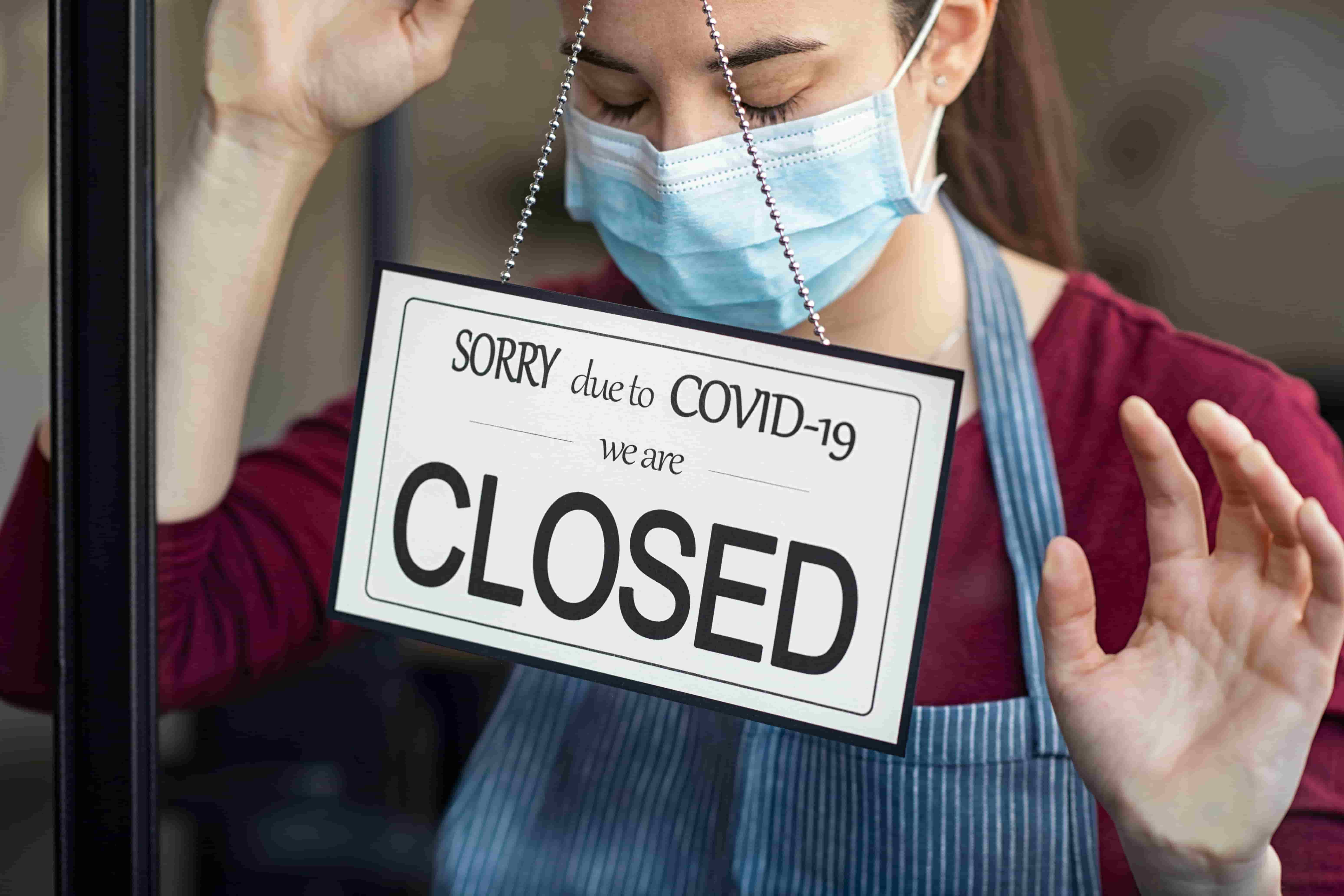What is Subchapter V Bankruptcy and the Small Business Reorganization Act?
When a company files for bankruptcy in order to reorganize and save their business, they file for Chapter 11 Bankruptcy.
Chapter 11 Bankruptcy is designed with large businesses in mind. The reorganization of a complicated entity like a large business results in there being several steps and stages involved that require a team of attorneys to fully manage. What about companies that do not require all these steps, however? What about companies that are far smaller in scale? For them, Chapter 11 is an overcomplicated mess of laws and processes and policies that can be costly and difficult. For them, the Bankruptcy Courts have conceived a new policy: Subchapter V of Chapter 11 Bankruptcy.
Chapter 11 Bankruptcy, Explained

In order to understand Subchapter V Bankruptcy, you first need to understand the greater scope of Chapter 11 Bankruptcy, the umbrella under which it exists. Chapter 11 Bankruptcy, also referred to as commercial bankruptcy, allows businesses or partnerships to restructure their debts while liquidating assets and re-negotiate payment plans with creditors.
When a corporation enters Chapter 11 Bankruptcy as a debtor, the bankruptcy process does not put the personal assets of the stockholders at risk other than the fluctuating value of their investment in the company's stock. However, a sole proprietorship – or when the owner of a business serves as the debtor – does not have an identity separate and distinct from their business. Ergo, Chapter 11 Bankruptcy for a sole proprietor includes the business and personal assets of the owners-debtors. Partnerships, in contrast, exist separate and apart from its individual partners. In a partnership bankruptcy case (partnership as debtor), the partners’ personal assets may on occasion be used to pay creditors.
Section 1107 of the code establishes the debtor as a fiduciary, with the rights and powers of a Chapter 11 trustee and requires the performance of all but the investigative functions and duties of a trustee. These duties are set forth in the Bankruptcy Code and Federal Rules of Bankruptcy Procedure.
Small Business Debtors
Prior to the establishment of Subchapter V, small businesses under Chapter 11 had to file as a “small business debtor,” codified at 11 U.S.C. § 101(51C). To qualify as a small business debtor, firstly, the business must be engaged in commercial or business activities with a total non-contingent debt of under $2,566,050. Secondly, either the US Trustee has not appointed creditors’ committee, or the court has determined the creditor’s committee is insufficiently active and representative to provide sufficient oversight.
So how is a Small Business Debtor treated differently from a normal Chapter 11 Bankruptcy? The differences are substantial. The U.S. Trustee exerts more influence over the bankruptcy process than in ordinary cases, including a preliminary interview to test the viability of the candidate in terms of their bankruptcy plan. After this, the trustee will oversee many of the business activities and actions taken by the debtor.
The Small Business Debtor has less time than a larger business to create their Chapter 11 Bankruptcy plan. According to 11 U.S.C. § 1121(e), the Small Business Debtor must file their plan within 180 days, with a possible extension to 300 days being available only to debtors who provide good arguments for the extension and proof they can finalize their bankruptcy plan within the time allotted. This is opposed to other businesses, which can extend their same period to eighteen months.
Once the bankruptcy reorganization plan is approved and underway, the debtor requires the bankruptcy court's approval of business transactions that are not ordinary. They must comply with the U.S. trustee's monthly reporting requirements. A committee of creditors will be assembled and have the power to appoint professionals to perform tasks through the bankruptcy process. However, despite the creditors hiring these professionals, the debtor must pay for said professionals. Several smaller businesses cannot afford the costs of Chapter 11 Bankruptcy, nor might they be able to effectively conduct business with so many limitations.
However, the process could still be improved upon, as seen, ultimately, by the creation of the new Subchapter V.

The Alternative – Chapter 7
For any small business who does not feel that Chapter 11 suits their needs, they have the option instead to file Chapter 7 Bankruptcy. However, Chapter 7 Bankruptcy, often referred to as the “liquidation chapter,” is not a good bankruptcy alternative for a business who hopes to stay open following the restructuring of their debt.
When a company files for bankruptcy relief under Chapter 7, all business assets become the property of the bankruptcy estate. A Chapter 7 trustee is assigned by the court to administer the estate. It is the Chapter 7 trustee’s job to liquidate the business property to pay unsecured creditors, such as tax debt, utility bills, credit card debt, and other debt that is not secured by collateral.
One significant factor to consider is how businesses filing under Chapter 7 often do not have control over their business or their activities once the bankruptcy goes underway. In the unlikely event the business does not shut their doors before filing Chapter 7 Bankruptcy relief, a Chapter 7 trustee may choose to operate the business for a short time. Continuing operations to pay debts is an option for the Chapter 7 trustee in certain circumstances. However, it is not common for a business to remain open after filing for Chapter 7.
This leaves two options: a difficult Chapter 11 procedure or the total finality of Chapter 7. For small businesses, there simply must be a better way. Thankfully, there now is, thanks to Subchapter V.
What is Subchapter V?
Subchapter V is also referred to as the Small Business Reorganization Act (SBRA). The SBRA was first approved in February 2020. As the name suggests, this simplified process for bankruptcy is designed for small businesses to reorganize following financial hardships.  The SBRA is codified at 11 U.S.C. § 1181 – 11 U.S.C. § 1195, otherwise known as Subchapter V. The SBRA is a voluntary option for small businesses, with many advantages over pre-existing options available to small businesses, including "small business debtors" under the Bankruptcy Code pre-SBRA. You can still choose to undergo bankruptcy in any of the aforementioned ways, but Subchapter V might prove to be a favorable option to small businesses contemplating the bankruptcy process.
The SBRA is codified at 11 U.S.C. § 1181 – 11 U.S.C. § 1195, otherwise known as Subchapter V. The SBRA is a voluntary option for small businesses, with many advantages over pre-existing options available to small businesses, including "small business debtors" under the Bankruptcy Code pre-SBRA. You can still choose to undergo bankruptcy in any of the aforementioned ways, but Subchapter V might prove to be a favorable option to small businesses contemplating the bankruptcy process.
Under the SBRA, small business debtors can maintain autonomy over their business operations even after the bankruptcy relief plan is underway. The more costly Chapter 11 requirements will no longer be required. The committee of creditors required in standard Chapter 11 Small Business Debtor cases are no longer appointed unless otherwise ordered by the bankruptcy court. This saves a great deal of money, since the debtor in standard Chapter 11 cases must pay for professionals appointed by a committee of creditors.
Unlike standard Chapter 11, each small business will have a trustee appointed to their case. To quote the SBRA, the trustee will “perform duties similar to those performed by a…Chapter 13 trustee and help ensure the reorganization stays on track.” Additionally, the disclosure statement, a detailed document informing creditors of key elements and provisions in the debtor’s plan that is required for most Chapter 11 Bankruptcies, is not required for debtors filing under Subchapter V.
The requirements of the bankruptcy plan are relaxed, allowing business owners to retain an interest ownership, provided the plan remains “fair and equitable” to creditors. Even if some creditors object, the debtor will still be able to pass their plan. SBRA hands power to the smaller businesses who, in a regular Chapter 11 case, might find themselves disadvantaged.
 Chapter 11 Bankruptcy is a way to find relief in the face of financial difficulties. However, the process is hard for small companies. The SBRA and Subchapter V might very well be the solution several companies need in order to stay afloat without putting themselves through financial difficulty in the process.
Chapter 11 Bankruptcy is a way to find relief in the face of financial difficulties. However, the process is hard for small companies. The SBRA and Subchapter V might very well be the solution several companies need in order to stay afloat without putting themselves through financial difficulty in the process.
And in fact, it already has. Scura is representing the first approved Subchapter V Bankruptcy filing in the Bankruptcy Court for the District of New Jersey, which hopefully will be the first of many bankruptcy cases designed to offer relief and opportunity to any small business struggling under financial burdens.
Are you a small business in need of financial relief? Do you think the SBRA might be the help you need in order to stay afloat? Then maybe we can help. The attorneys at Scura, Wigfield, Heyer, Stevens & Cammarota LLP can help. Please call our offices to schedule a free consultation and hear your options.




